Operational Technology Security Market Size
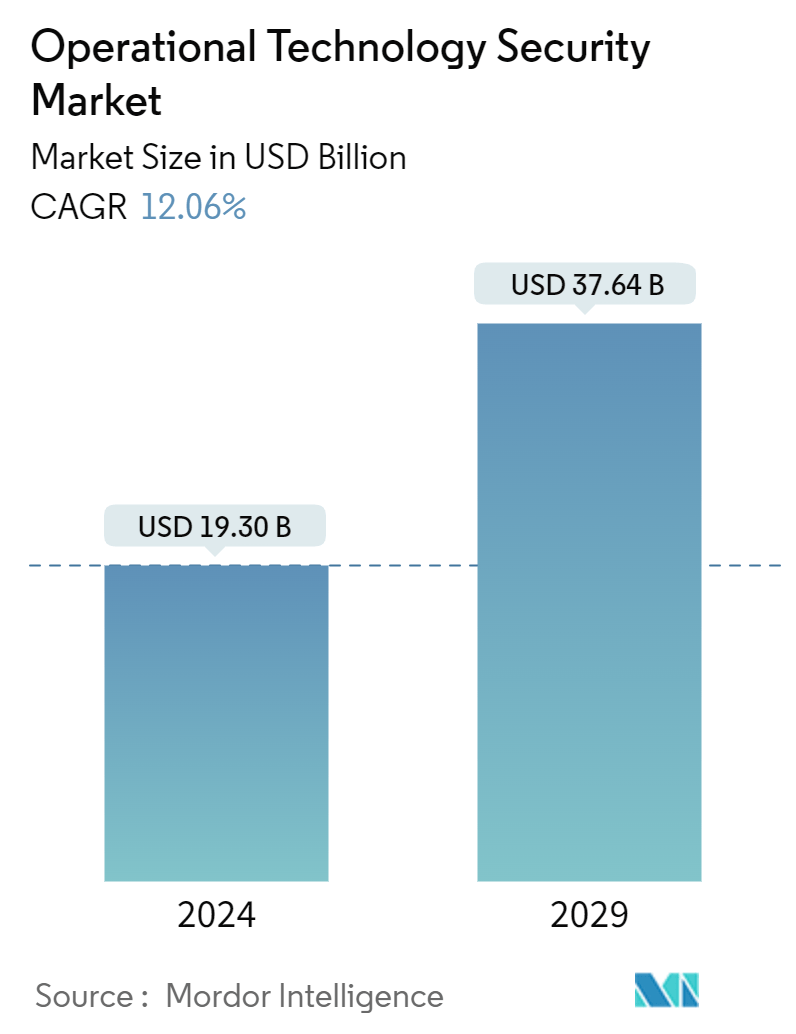
| Study Period | 2019 - 2029 |
| Market Size (2024) | USD 19.30 Billion |
| Market Size (2029) | USD 37.64 Billion |
| CAGR (2024 - 2029) | 12.06 % |
| Fastest Growing Market | Asia Pacific |
| Largest Market | North America |
Major Players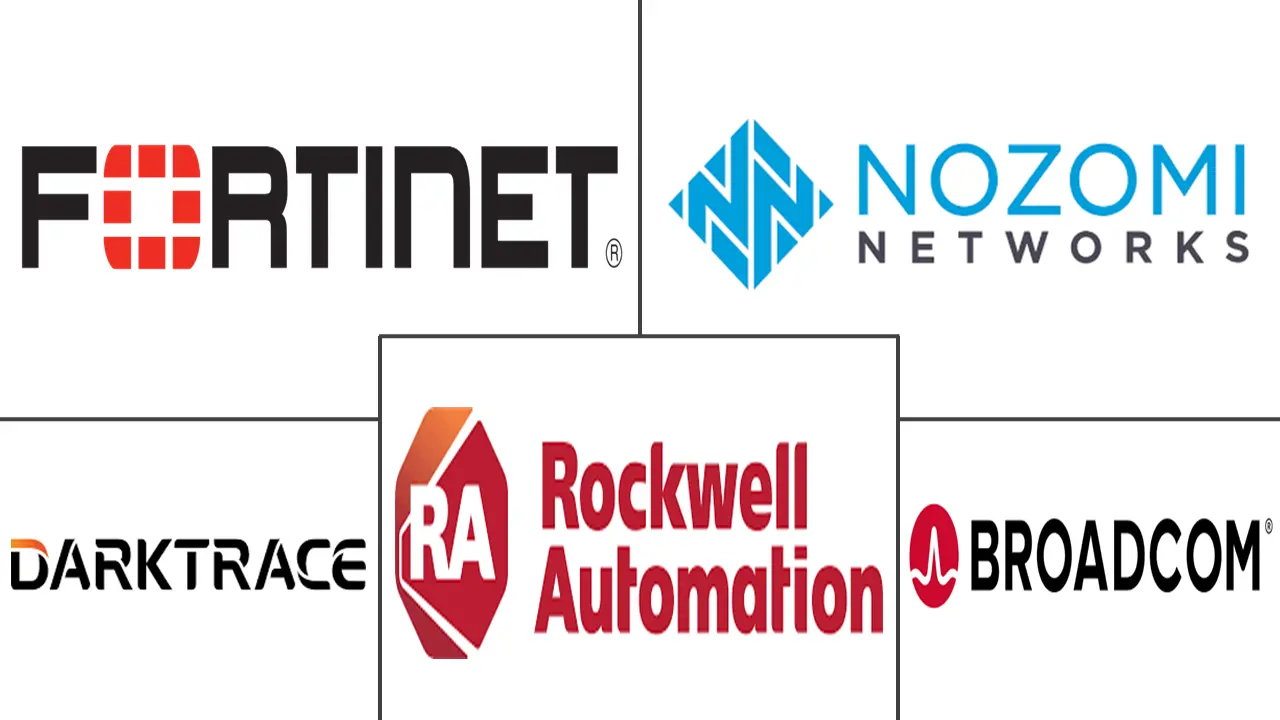
*Disclaimer: Major Players sorted in no particular order |
Operational Technology Security Market Analysis
The Operational Technology Security Market size is estimated at USD 19.30 billion in 2024, and is expected to reach USD 37.64 billion by 2029, growing at a CAGR of 12.06% during the forecast period (2024-2029).
- In recent years, sophisticated cyber-attacks have increasingly targeted critical infrastructure sectors, including energy, transportation, manufacturing, and water utilities. In late 2023 and 2024, cyber actors affiliated with Iran and pro-Russia entities infiltrated and manipulated critical US industrial control systems (ICS) spanning the food and agriculture, healthcare, and water and wastewater sectors. These breaches underscore a looming public safety risk and allow malicious actors to inflict physical harm and disrupt essential services. Such incidents have heightened awareness of the vulnerabilities within critical infrastructure and emphasized the pressing need for fortified OT security measures.
- Cyber-attacks on critical infrastructure can lead to dire consequences, from service disruptions and asset damage to environmental crises and threats to human safety. The repercussions often ripple beyond the immediate target, impacting communities, regions, and national economies. This recognition of potential fallout has prompted organizations and governments to prioritize safeguarding critical OT systems, driving a surge in demand for OT security solutions.
- To secure operational technology systems, organizations need specialized security solutions tailored to the distinct requirements of industrial control systems, SCADA (Supervisory Control and Data Acquisition) networks, and other OT infrastructures. These solutions, including industrial firewalls, network monitoring and detection tools, and secure remote access technologies, often come at a premium compared to traditional IT security measures.
- OT environments, especially in critical infrastructure and industrial settings, are complex. They encompass a diverse array of devices, protocols, and legacy systems that must be integrated and secured. As a result, implementing comprehensive OT security solutions demands extensive assessments, integration efforts, and customizations, all of which contribute to heightened implementation costs.
- Securing OT systems necessitates specialized expertise in industrial control systems, operational technology, and cybersecurity. Consequently, hiring and retaining personnel with this niche skill set poses a significant financial challenge for organizations. The limited availability of OT security experts, coupled with fierce competition for their services, inflates the labor costs tied to OT security implementation and maintenance.
- Cyber-attacks on critical infrastructure, including energy, transportation, and government systems, are expected to surge in war situations like the Russia-Ukraine Israel-Hamas wars. The Russia-Ukraine war and the Israel-Hamas conflict have underscored the vulnerabilities of critical infrastructure and highlighted the paramount importance of operational technology (OT) security. As a result, there's been a global surge in demand for OT security solutions and services. In response, the market is increasingly emphasizing bolstering the resilience of these critical systems against cyber threats.
Operational Technology Security Market Trends
Oil and Gas End User Segment is Expected to Witness Significant Growth
- The oil and gas industry is a vital component of the global energy supply. Any disruption or compromise of its operational technology systems can have severe consequences for energy security and the broader economy. Successful cyber attacks on oil and gas infrastructure, such as refineries, pipelines, and offshore platforms, can lead to production outages, environmental disasters, and even physical damage to critical assets. This high-stakes nature of the oil and gas industry has made the security of OT systems a top priority for companies in this sector.
- Digital technologies, including cloud computing, industrial IoT (IIoT), and data analytics, are being swiftly adopted by the oil and gas industry to boost operational efficiency and enhance decision-making. However, alongside these advancements come new vulnerabilities and attack surfaces that demand attention. The merging of IT and OT systems, coupled with heightened connectivity of field devices and remote assets, has broadened the potential attack surface for cyber threats. This evolution underscores the urgent need for robust OT security measures.
- Regulatory bodies impose various industry-specific regulations and standards on the oil and gas sector. Key standards include the NIST Cybersecurity Framework, the ISA/IEC 62443 standard, and the API Standard 1164 tailored for pipeline control systems. For oil and gas companies, adhering to these standards is a necessity. Non-compliance can lead to hefty fines, tarnished reputations, and disruptions in operations. As a result, there has been a marked uptick in investments directed towards OT security solutions and services, ensuring the safeguarding of vital systems and assets.
- According to OPEC, in 2023, global crude oil demand reached 102.21 million barrels per day. It is anticipated that in 2024, it will reach 104 million barrels per day. The increasing demand in the industry forces OT security to be a top priority. The industry has a global presence, with vast infrastructure spread across various regions, including North America, the Middle East, Europe, and Asia-Pacific. The need to secure these geographically distributed OT systems and critical assets has created a significant demand for OT security solutions that can address the diverse operational and environmental challenges faced by the industry.
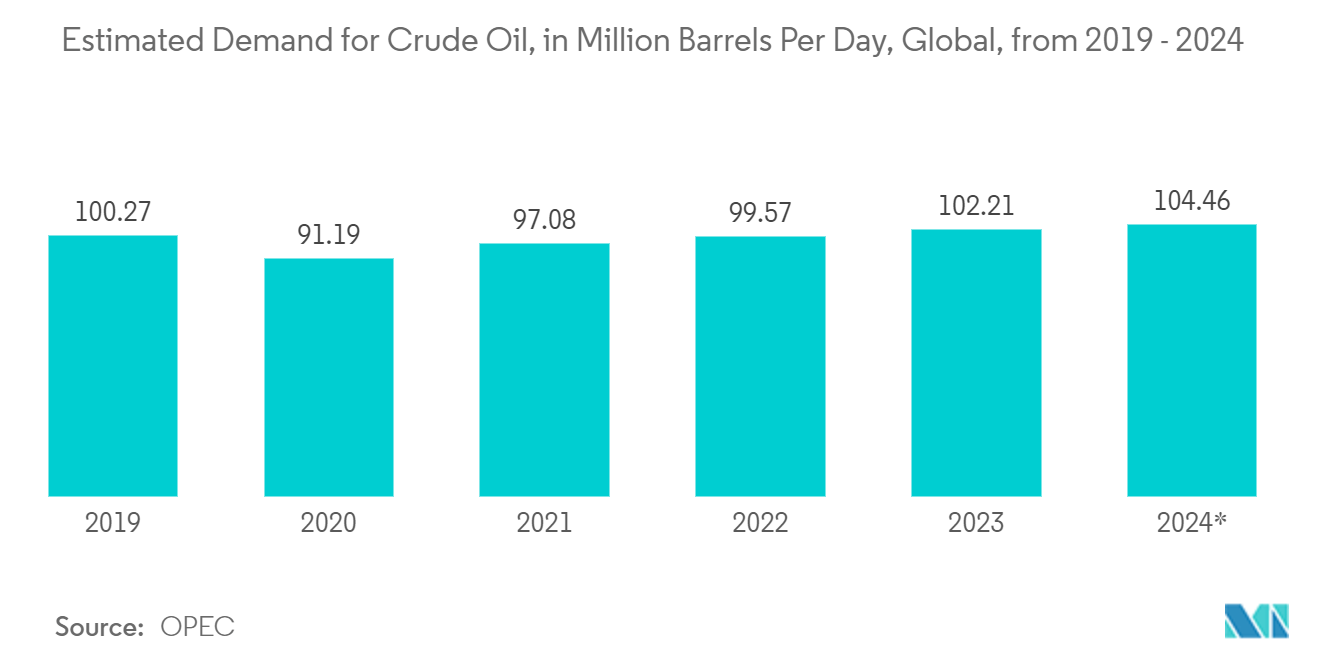
North America is Expected to Hold Significant Market Share
- In North America, especially in the United States, industries are taking proactive measures to address vulnerabilities in their operational technology systems. High-profile cyber incidents, including the Stuxnet worm and ransomware attacks on critical infrastructure, have heightened awareness of OT security risks. This heightened awareness has spurred the adoption of specialized OT security solutions, safeguarding against cyber threats and bolstering the resilience of industrial control systems and critical infrastructure.
- The region has instituted regulatory frameworks mandating OT security measures for organizations in critical sectors. For instance, in September 2023, NIST released Special Publication (SP) 800-82r3, titled "Guide to Operational Technology (OT) Security," to aid OT system owners and operators. This guide emphasizes enhancing the security of OT systems while considering their distinct needs for performance, reliability, and safety. SP 800-82r3 offers a comprehensive overview of OT and its common system topologies. It pinpoints threats to organizational missions and business functions reliant on OT, outlines typical vulnerabilities within OT, and recommends security measures and countermeasures to mitigate associated risks.
- Leading OT security vendors, including Rockwell Automation, Schneider Electric, and Fortinet Inc., Broadcom, command a significant market share in the region. With robust research and development capabilities, these vendors craft innovative OT security solutions tailored to regional industry needs. Their established presence, vast customer base, and extensive distribution channels solidify North America's dominant stance in the OT security market.
- The region's critical infrastructure spans energy, transportation, manufacturing, and water/wastewater systems, all heavily reliant on operational technology. The integration of advanced industrial automation and Internet of Things (IoT) devices has expanded the attack surface, underscoring the need for robust OT security measures. Recognizing the stakes, organizations across the region prioritize securing these mission-critical systems to maintain operational continuity and avert disruptions.
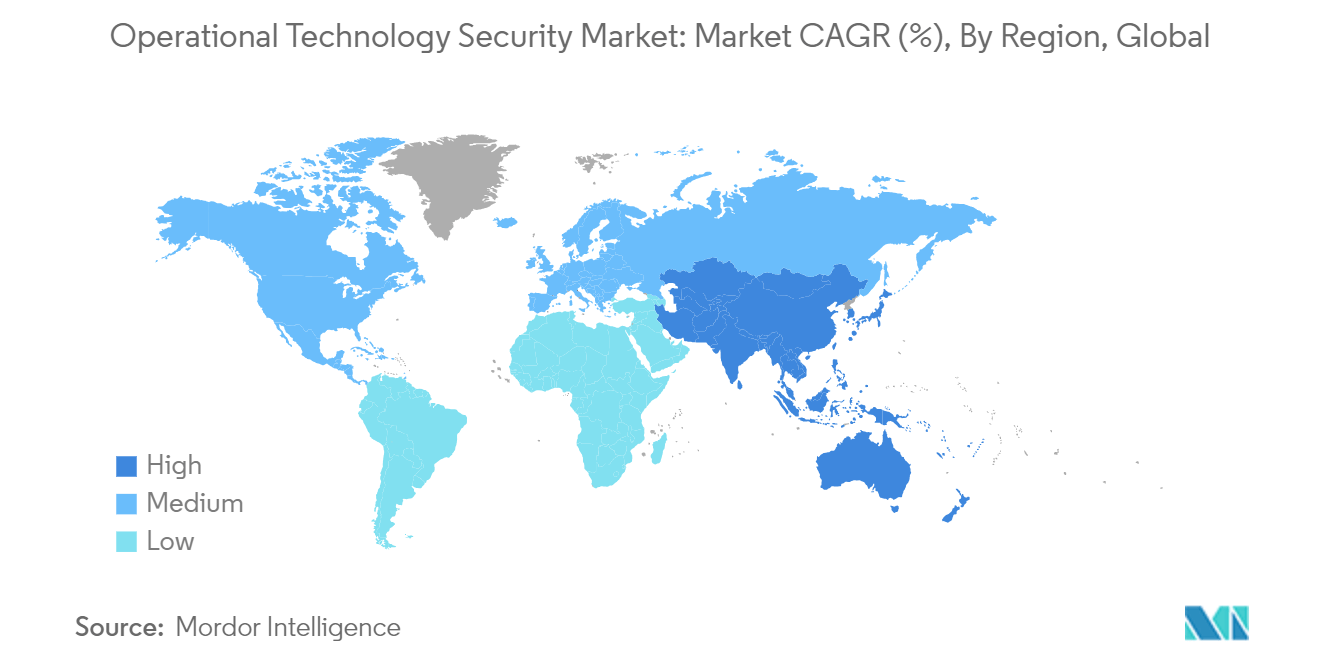
Operational Technology Security Industry Overview
The Operational Technology (OT) Security market is fragmented, with numerous players intensifying the competition. Leading security providers perpetually enhance their technologies, aiming to outpace competitors and uphold consumer efficiency, integrity, and safety. By emphasizing partnerships, product enhancements, and collaborations, these players strive to secure a dominant position and a substantial market share. Some of the key players include Fortinet, Inc., Nozomi Networks, Rockwell Automation, Inc., Darktrace Holdings Limited, and Broadcom.
- August 2024 - Fortinet unveiled enhancements to its already comprehensive OT security platform. These updates bolster customers' secure networking and security operations (SecOps) capabilities. Furthermore, the updates deepen Fortinet's strategic alliances with top OT vendors. This move underscores Fortinet's commitment to safeguarding the expanding cyber-physical systems (CPS) market and its dedication to protecting vital infrastructures across diverse sectors, including energy, defense, water supply, manufacturing, food, transportation, and beyond.
- March 2024: Mitsubishi Electric Corporation agreed with Nozomi Networks Inc. to collaboratively advance OT security initiatives, encompassing both marketing and technical development. Mitsubishi Electric took an equity stake in Nozomi Networks as a partnership component. The collaboration will merge Mitsubishi Electric's factory automation (FA) equipment and OT security solutions with Nozomi Networks' advanced OT network visualization and intrusion-detection technologies. This integration sought to forge enhanced OT security solutions, ensuring robust security and uninterrupted system operations.
Operational Technology Security Market Leaders
-
Fortinet, Inc.
-
Nozomi Networks
-
Rockwell Automation, Inc.
-
Darktrace Holdings Limited
-
Broadcom
*Disclaimer: Major Players sorted in no particular order
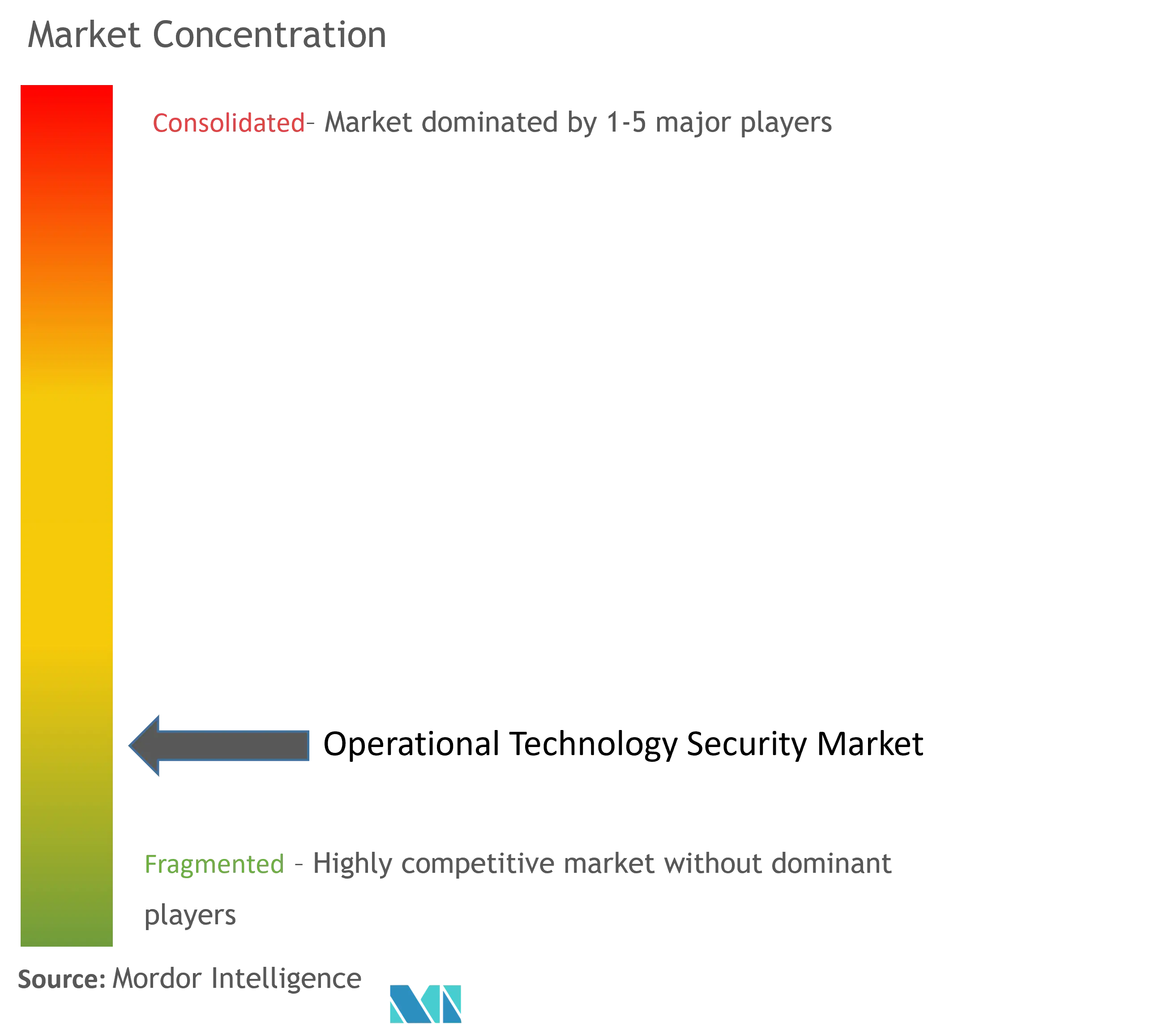
Operational Technology Security Market News
- February 2024: Mitsubishi Electric Corporation inked a deal with Dispel LLC to bolster its operational technology (OT) security business via enhanced marketing and technical development. As manufacturing undergoes globalization and embraces IoT and digital transformation, there is a surging interest in remote maintenance. This technology allows for internet monitoring and troubleshooting production lines from distant locations.
- February 2024: The US Department of Energy (DOE) Office of Cybersecurity, Energy Security, and Emergency Response (CESER) collaborated with Rockwell Automation to assess cybersecurity vulnerabilities in various critical infrastructure components. Rockwell, which focuses on industrial automation and digital transformation, joins five other private sector players in DOE's Cyber Testing for Resilient Industrial Control Systems (CyTRICS) program. The testing is set to occur at the Idaho National Laboratory, where Rockwell's insights are expected to enhance the CyTRICS initiative.
Operational Technology Security Market Report - Table of Contents
1. INTRODUCTION
- 1.1 Study Assumptions and Market Definition
- 1.2 Scope of the Study
2. RESEARCH METHODOLOGY
3. EXECUTIVE SUMMARY
4. MARKET INSIGHTS
- 4.1 Market Overview
-
4.2 Industry Attractiveness - Porter's Five Forces Analysis
- 4.2.1 Threat of New Entrants
- 4.2.2 Bargaining Power of Buyers
- 4.2.3 Bargaining Power of Suppliers
- 4.2.4 Threat of Substitute Products
- 4.2.5 Intensity of Competitive Rivalry
- 4.3 Industry Value Chain Analysis
- 4.4 An Assessment of Macroeconomic Trends on the Market
5. MARKET DYNAMICS
-
5.1 Market Drivers
- 5.1.1 Surge in Cyber-Attacks Targeting Critical Infrastructure
- 5.1.2 Increased Integration of Government Initiatives into Security Standards
-
5.2 Market Restraints
- 5.2.1 High Implementation and Maintenance Cost
- 5.2.2 Compatibility Issues with Operational Technology System
6. MARKET SEGMENTATION
-
6.1 By Component
- 6.1.1 Solutions
- 6.1.2 Services
-
6.2 By Deployment Mode
- 6.2.1 On-Premises
- 6.2.2 Cloud
-
6.3 By End-User Industry
- 6.3.1 Manufacturing
- 6.3.2 Oil and Gas
- 6.3.3 Power Utilities
- 6.3.4 Transportation and Logistics
- 6.3.5 Others
-
6.4 By Geography***
- 6.4.1 North America
- 6.4.2 Europe
- 6.4.3 Asia
- 6.4.4 Australia and New Zealand
- 6.4.5 Latin America
- 6.4.6 Middle East and Africa
7. COMPETITIVE LANDSCAPE
-
7.1 Company Profiles*
- 7.1.1 Fortinet, Inc.
- 7.1.2 Siemens AG
- 7.1.3 Schneider Electric SE
- 7.1.4 Broadcom
- 7.1.5 Darktrace Holdings Limited
- 7.1.6 Nozomi Networks
- 7.1.7 Rockwell Automation, Inc.
- 7.1.8 Honeywell International Inc.
- 7.1.9 GE Vernova (General Electric)
- 7.1.10 Claroty
- 7.1.11 Palo Alto Networks
8. INVESTMENT ANALYSIS
9. FUTURE OF THE MARKET
** Subject To AvailablityOperational Technology Security Industry Segmentation
Operational technology (OT) security encompasses the measures and controls designed to safeguard OT systems, those utilizing specialized software to automate industrial processes, from cybersecurity threats. With the merging of information technology and OT enhancing automation and efficiency in industrial systems, prioritizing OT security has become vital to managing critical infrastructure. The study tracks the revenue generated from selling software solutions and services several vendors provide as the baseline for market estimations. The study also tracks the macroeconomic factors and growth trends impacting the market.
The operational technology security market is segmented by component (solutions and services), deployment mode (on-premises and cloud), end-user industry (manufacturing, oil and gas, power utilities, transportation and logistics, and others), and geography (North America, Europe, Asia Pacific, Rest of the World). The report offers market forecasts and size in value (USD) for all the above segments.
| By Component | Solutions |
| Services | |
| By Deployment Mode | On-Premises |
| Cloud | |
| By End-User Industry | Manufacturing |
| Oil and Gas | |
| Power Utilities | |
| Transportation and Logistics | |
| Others | |
| By Geography*** | North America |
| Europe | |
| Asia | |
| Australia and New Zealand | |
| Latin America | |
| Middle East and Africa |
Operational Technology Security Market Research FAQs
How big is the Operational Technology Security Market?
The Operational Technology Security Market size is expected to reach USD 19.30 billion in 2024 and grow at a CAGR of 12.06% to reach USD 37.64 billion by 2029.
What is the current Operational Technology Security Market size?
In 2024, the Operational Technology Security Market size is expected to reach USD 19.30 billion.
Who are the key players in Operational Technology Security Market?
Fortinet, Inc., Nozomi Networks, Rockwell Automation, Inc., Darktrace Holdings Limited and Broadcom are the major companies operating in the Operational Technology Security Market.
Which is the fastest growing region in Operational Technology Security Market?
Asia Pacific is estimated to grow at the highest CAGR over the forecast period (2024-2029).
Which region has the biggest share in Operational Technology Security Market?
In 2024, the North America accounts for the largest market share in Operational Technology Security Market.
What years does this Operational Technology Security Market cover, and what was the market size in 2023?
In 2023, the Operational Technology Security Market size was estimated at USD 16.97 billion. The report covers the Operational Technology Security Market historical market size for years: 2019, 2020, 2021, 2022 and 2023. The report also forecasts the Operational Technology Security Market size for years: 2024, 2025, 2026, 2027, 2028 and 2029.
Operational Technology Security Industry Report
Statistics for the 2024 Operational Technology Security market share, size and revenue growth rate, created by Mordor Intelligence™ Industry Reports. Operational Technology Security analysis includes a market forecast outlook for 2024 to 2029 and historical overview. Get a sample of this industry analysis as a free report PDF download.



